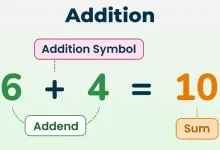Compound interest is a fundamental concept in financial mathematics that plays a crucial role in various aspects of finance, investing, and economics. It refers to the process where interest is earned not only on the initial principal but also on the accumulated interest from previous periods. This compounding effect can significantly amplify the growth of an investment or debt over time.
Understanding Compound Interest
At its core, compound interest involves the reinvestment of interest, allowing the investment to grow exponentially rather than linearly. Unlike simple interest, which is calculated only on the principal amount, compound interest takes into account the interest earned over previous periods as well. This continuous reinvestment leads to a snowball effect where the growth rate accelerates as the interest accumulates.
Formula and Calculation
The formula for compound interest is:
A=P(1+nr)nt
Where:
- A is the amount of money accumulated after n years, including interest.
- P is the principal amount (the initial amount of money).
- r is the annual interest rate (decimal).
- n is the number of times that interest is compounded per unit t (typically per year).
This formula allows for the calculation of the future value of an investment or debt based on different compounding frequencies (e.g., annually, semi-annually, quarterly, monthly).
Importance in Finance
Compound interest is a cornerstone of finance due to its significant implications:
-
Investment Growth: For investors, compound interest means that earnings from investments can grow exponentially over time. By reinvesting earnings, investors benefit not only from the initial principal but also from the interest earned on that principal.
-
Debt Accumulation: Conversely, compound interest also applies to debts. Borrowers accrue interest not just on the principal amount borrowed but also on the interest charged for previous periods. This can lead to substantial debt burdens if not managed effectively.
-
Time Value of Money: Compound interest underscores the principle of the time value of money, which asserts that a sum of money is worth more today than the same sum in the future due to its potential earning capacity.
Practical Applications
Savings and Investments
In personal finance, compound interest encourages long-term saving and investment strategies. By starting to save or invest early, individuals can leverage the power of compounding over time. Retirement accounts, such as IRAs and 401(k) plans, often benefit greatly from compound interest, allowing individuals to build substantial savings over their working lives.
Loans and Mortgages
On the lending side, compound interest affects mortgages, car loans, and other forms of borrowing. Lenders use compound interest to calculate the total cost of borrowing over time, influencing monthly payments and the overall affordability of loans. Understanding compound interest helps borrowers make informed decisions about taking on debt and choosing repayment schedules.
Business and Corporate Finance
In corporate finance, businesses use compound interest in capital budgeting decisions, evaluating investment opportunities, and assessing the cost of financing. Financial models incorporate compound interest to project future cash flows and determine the profitability and feasibility of projects or investments.
Variations and Considerations
Compound Frequency
The frequency at which interest compounds (annually, quarterly, monthly) impacts the total amount accumulated. More frequent compounding periods result in slightly higher effective interest rates due to more frequent additions of interest to the principal.
Effective Annual Rate (EAR)
To compare investments or loans with different compounding frequencies, the effective annual rate (EAR) is used. The EAR reflects the equivalent annual interest rate considering the effect of compounding over a given period.
Compound vs. Simple Interest
The difference between compound and simple interest lies in how interest is calculated. Simple interest is based solely on the principal amount, while compound interest considers interest on interest. Over time, compound interest yields higher returns on investments but also increases the total cost of borrowing.
Historical Context
The concept of compound interest has ancient roots, with early examples found in Babylonian and Egyptian financial practices. The modern formulation and widespread understanding of compound interest emerged during the development of modern banking and finance systems, particularly during the Renaissance and Industrial Revolution.
Conclusion
Compound interest is a foundational concept in financial mathematics that drives both wealth accumulation and debt management strategies. Its exponential growth effect underscores the importance of long-term planning and disciplined financial decisions. Whether saving for retirement, investing in stocks, or managing debt, understanding compound interest empowers individuals and businesses to make informed financial choices that align with their long-term goals and objectives.

